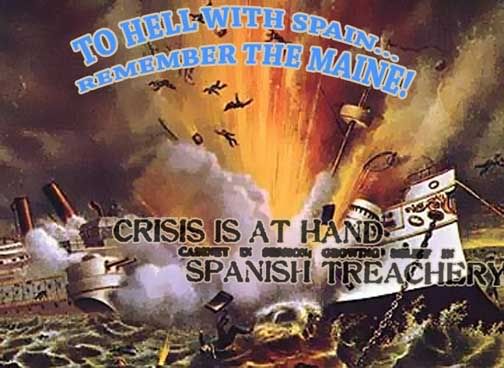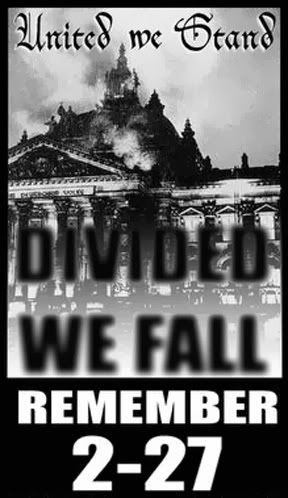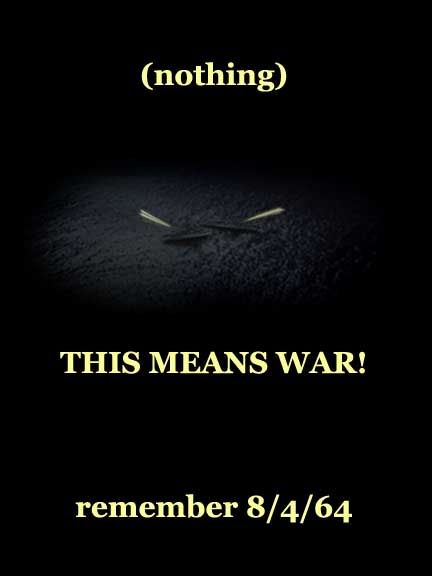Adam Larson / Caustic Logic
The 12/7-9/11 Treadmill and Beyond
March 29 2009
A key point I’ve been making in my posts here and at the JREF forum has been the logic behind the alleged decision by president Roosevelt to not just allow or provoke a Japanese attack on Hawaii, but to specifically want it to be a defenseless slaughter with heavy losses of personnel and ships. Militarily of course that would be an unmitigated disaster, but politically it would be, and was, a triumph. I have a dedicated post to explain that sinister logic.
Along the way I’ve been stepping around a general ignorance of the actual Naval losses, of just what FDR might have been willing to sacrifice - in the line of vital ships - to get the nation riled up for war. I had a feeling that a precise cataloging of the number and type of ships at Pearl Harbor during 1941 would be a daunting bit of work. But using a few different sources I was able to get approximate numbers that all fit each other perfectly, making it a pretty good catalog for my purposes, and a guideline for measuring the shrinking of the vulnerable Pacific Fleet and its alleged deterrent potential.
I did a little research looking first at some details from Prange et al. At Dawn We Slept [2000 edition] regarding what was taken from Kimmel’s corral earlier in 1941 to support a vital buildup in the Atlantic to shore up England’s desperate line against the Nazis.
On April 20 Carrier USS Yorktown and an escort of five destroyers was sent (one days after the rest, apparently a rear-guard) [p 130] Carrier strenth at Pearl reduced by 1/3.
On April 26 Stark alerted Kimmel “shortly a considerable detachment from your fleet will be brought to the Atlantic “ [p 131]
The movement began May 19 and continued for three days, [132] ultimately including three Battleships (NM, MS, ID), four light cruisers, and a dozen more destroyers. [133] "During the summer additional forays would cost Kimmel three oilers, three transports, and a number of auxiliaries – a total of sixteen ships. All in all, Kimmel lost about one-fourth of his Pacific Fleet […] more ships than the Japanese destroyed at Pearl Harbor. What priceless irony!” [133]
I read the numbers offered therein as adding up to a total of 41 ships sent to the Atlantic in the spring and summer of 1941, 25 war ships (battleships, cruisers, destroyers, carriers) and sixteen others (which I’m calling “auxiliary” to simplify). This total is given as about 1/4 reduction of the fleet at Pearl.
41 = .25x, x = 164 Total prior to this, reading literally.
164-41 = 123 remaining after these losses.
I’ve decided 68 of these were war ships and 55 auxiliary (see below).
After this first round of attrition, Admiral Kimmel complained to his boss, CNO Stark, about the loss of forces in May. By mid-September, the CinCPAC's ship-hunger had triggered a request for at least two battleships returned to deter Japan. In At Dawn We Slept, Prange et al. reason these were unlikely to do the trick, if anything could, and having two more battleships to damage would only have "made such enthusiastic airmen as Genda fairly smack their lips in anticipation.” [242]
Auxiliary losses stopped after the summer, but a further 22 warships, including both carriers, were peeled off between November 26 and December 5 for carrier task forces. These were to protect the movement of 25 aircraft for Wake and Midway Islands, a special request from Washington, approved by Kimmel, and ironically occurring just as six of Japan’s carriers were moving there to replace them. Removed from harm’s way were 6 Heavy Cruisers (3 with each carrier), 14 destroyers (split 9/5), and of course the Enterprise and Lexington. [source - Navy]
After this final depletion, there remained in port: 8 Battleships, 2 Heavy Cruisers, 6 Light Crusiers, 30 Destroyers
Total = 46 war ships
55 Additional auxiliary ships (minesweepers, submarines, tenders, etc)
46 + 55 = 101 total ships when the zeros rounded the horn.
101 + 22 detached in task forces = 123 total before 11/26. That’s what I found the 1/4 reduction of mid-year had left.
[source - Navy].
As a total non-expert in naval matters, I cannot give a worthwhile assessment of the value of the classes of war ships, for either force availability or loss availability. The corroborating numbers above however show a total reduction from 164 to 101 ships, or a 38% overall numerical loss during the seven months before the attack. When we consider the auxiliary vessels are less valuable as either targets or as assets to move, it becomes clear their more stable numbers are muffling the real issue; the location of prized war ships. While only 16 various smaller ships were shuffled out in 1941, a total of 47 destroyers and larger were moved out as of December 7, including almost all heavy cruisers and of course all three once-available carriers. This number is not only more than the Japanese sunk, but slightly more warships than they had to shoot at.
In summary, before the Japanese were able to sneak up on it, the Pacific Fleet's battle force was cut in half, and I would guess the less valuable half is what was left for the torpedos. With what seems a bit of mathematical hyperbole, but a better feel for naval systems, the estimate of Layton et al, gives an idea of the pickings that were left after the repeated withdrawals of Naval power [And I was There, 1985, p 263]:
"At this point [Dec 5], the disposition of of Kimmel's forces was as follows: All the carriers were at sea with specific missions. All the heavy cruisers and more than half of the fleet's destroyers were at sea protecting the carriers. Only the battle force - the old, slow battleships with their escorts of light cruisers and destroyers - was still at Pearl Harbor."













No comments:
Post a Comment